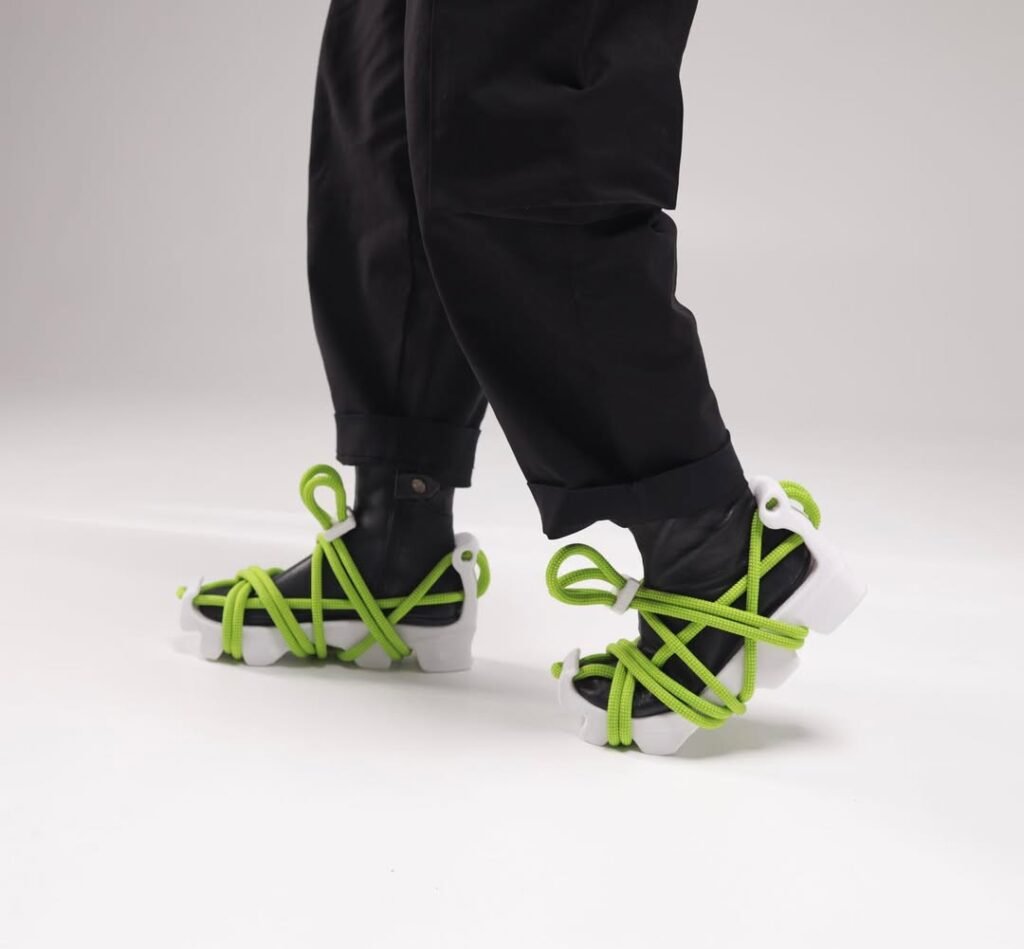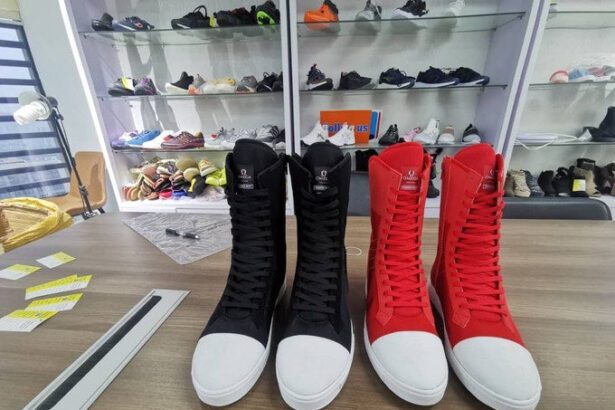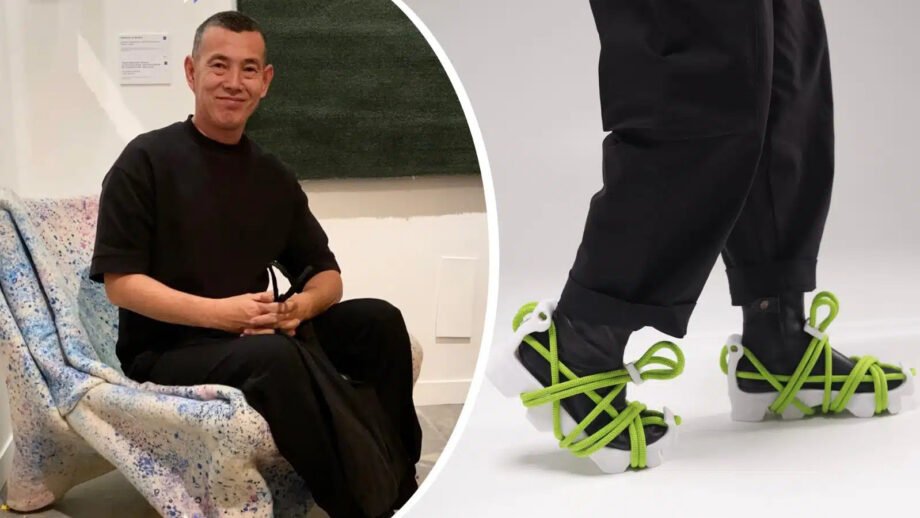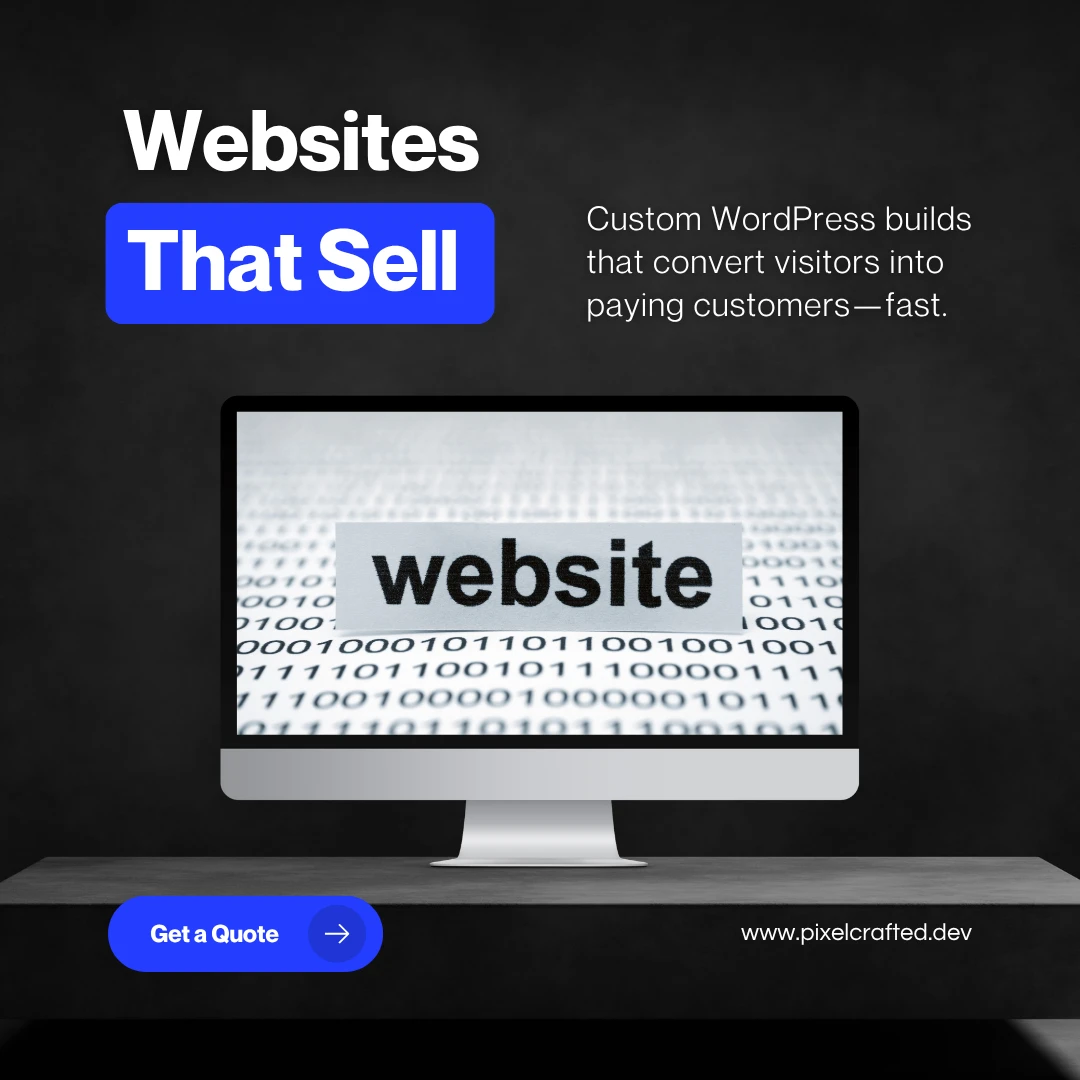Introduction: Innovation, Heritage, and the Future of Footwear
What happens when nomadic heritage meets additive manufacturing? Meet Daniyar Uderbekov, the Kazakh entrepreneur behind UDRB, a modular, glue-free, and recyclable sneaker that’s turning heads on Instagram and winning over eco-minded consumers. In this editorial, we explore Uderbekov’s journey from designer to founder, unpack the 3D-printed shoes technology that powers UDRB, and examine the brand’s growth strategy, global buzz, and what it all means for sustainable footwear and emerging-market entrepreneurship.
The Entrepreneur Behind UDRB Sneakers: Daniyar Uderbekov’s Journey
Background & Biography
Before launching UDRB, Uderbekov built a career in visual culture—first as a graphic designer and event agency owner, then as a product designer exhibiting works at Milan and Dutch Design Week. His perspective is steeped in Central Asian craft traditions and informed by global design icons like Isamu Noguchi and Philippe Starck. Formal training in object design (Moscow) sharpened his eye for form, function, and material honesty—skills that would later translate naturally to footwear.
Inspiration & Philosophy
Uderbekov’s signature idea is an “alternate future” where ancient craftsmanship evolves alongside high tech. That vision animates UDRB’s silhouettes: contemporary, yes—but full of cultural signals that nod to Kazakhstan’s nomadic roots. His design ethos rests on sustainability, repairability, and circular design: create products that live longer, waste less, and tell a story worth sharing.
From Passion Project to Sustainable Startup
Like many post-2020 pivots, UDRB began when the pandemic reset priorities. With his wife’s encouragement, Uderbekov doubled down on design study and turned an eco-driven experiment into a brand with a mission: minimize waste, maximize longevity. He focused on one radical constraint—no glue—because adhesives complicate recycling and repair. The outcome is a modular sneaker where each part can be separated, upgraded, or recycled. In other words: a shoe built for the circular economy rather than the landfill.
Key takeaways for founders:
- Define a clear sustainability constraint (e.g., “no glue”) and let it guide design decisions.
- Convert a personal philosophy into a concrete product principle (modularity, repairability).
- Use education + iteration to de-risk the jump from concept to commerce.

Inside the Innovation: How 3D-Printed UDRB Sneakers Work
The Three-Part Modular System
- 3D-Printed TPU Sole
- Material: thermoplastic polyurethane (TPU)
- Benefits: lightweight, flexible, shock-absorbing, and recyclable
- Made as a single printed piece—no glue—so it’s replaceable when worn out
- Leather Inner Boot
- Inspiration: traditional makhsi/ichigi soft boots of Central Asia
- Function: breathable, water-resistant, and comfortable enough to wear indoors on its own
- Cultural link: preserves a tactile thread between heritage footwear and modern use
- Climbing Rope Laces
- Symbolism: a nod to Almaty’s alpine culture
- Function: tool-free fastening that binds upper and sole securely—no plastic hardware
- UX bonus: easily adjustable tension for fit and comfort
Circular Economy in Action
- Repairability: swap the sole, refresh the rope, recondition the leather—don’t trash the whole shoe.
- Longevity: modular parts keep the sneaker in rotation longer.
- Waste reduction: glue-less construction simplifies end-of-life disassembly and recycling.
Style + Story
This is eco-design with attitude. The rope lace is a bold visual statement; the leather inner boot threads a narrative of place; the printed sole telegraphs futurism. It’s a sneaker you can talk about—cultural symbolism + high-tech form—without compromising comfort or purpose.
UDRB’s Production and Growth Strategy
Current Model
- Handcrafted in a workshop outside Astana
- One signature look today: white TPU sole + neon green rope for instant brand recognition
- Price: around $200—an accessible premium tier compared to luxury streetwear
Scaling Plans
- 2026 goal: move from bespoke to small-batch mass production to lower unit costs
- Regional expansion first: Central Asia, the Caucasus, and nearby hubs where heritage-modern blends resonate
- Collaboration pipeline: a planned “Alpine Rope” collection—smart leverage for distribution and awareness
- R&D roadmap: interchangeable soles for seasons/terrains, plus artisan collaborations (leatherworkers, weavers) to deepen the cultural story
Why this strategy works:
- Keeps unit economics realistic while testing demand signals
- Builds brand equity at home before scaling abroad
- Uses collabs to accelerate reach without diluting DNA
Going Global: Instagram Buzz and International Demand
Viral Launch on Instagram (@danikassel)
Early posts drew hundreds of likes and comments within days—signals of organic product-market intrigue. Typical asks:
- “Do you ship to the USA?”
- “I need these now!”
Social channels acted as instant global showroom, compressing the feedback loop and lowering customer-acquisition costs.
Global Reach
Inquiries landed from multiple continents, while local tastemakers (e.g., artist Mimi Ilnitskaya) amplified credibility. For a studio brand, this is the blueprint: authentic content → community validation → international pull.
Market Timing
The 3D-printed footwear category is projected to grow rapidly this decade, pushed by demand for customization, sustainability, and designs impossible with traditional tooling. UDRB’s early presence and distinct narrative position it to ride that wave rather than chase it.
Consumer Reactions and Reviews
Positive Feedback
- Tradition + Tech: Customers love the fusion—it looks unlike anything else.
- Sustainability: Repairable, glue-free construction is a clear value signal.
- Cultural Story: Wearing UDRB feels like participating in story-driven fashion with roots.
Criticism & Questions
- Flamboyance: Some find the look too bold for daily wear (which also makes it memorable).
- Durability on rough roads: A fair ask that underscores the importance of terrain-specific soles—already on the roadmap.
Editorial Insight
Pushback is a hallmark of category disruption. UDRB’s differentiation—modularity, heritage cues, and printed architecture—is the point. In a market of look-alikes, bold is how you get remembered.
Why UDRB Matters: Lessons in Entrepreneurship and Sustainability
Kazakh Pride & Global Recognition
It’s rare for a Central Asian studio to break into global sneaker culture—rarer still to do it with a sustainability-first concept. UDRB’s rise is a proof point: innovation isn’t bound to Silicon Valley or Paris ateliers; it can emerge from Astana, Almaty, and everywhere in between.
Business Takeaways for Founders
- Edges win: A sharp constraint (no glue) can unlock novel form factors and brandable IP.
- Tell a true story: Heritage isn’t window dressing; it’s strategic differentiation that compounds.
- Start where you stand: Build a regional beachhead, then scale with partners who share your values.
Consumer Takeaways
Choosing UDRB isn’t just buying shoes—it’s investing in a modular, repairable, and culturally resonant approach to style. It’s a vote for products designed to last, not landfill.
Conclusion: A Small Startup Making Big Footprints
From a designer’s sketch to a 3D-printed shoe that’s capturing global attention, Daniyar Uderbekov demonstrates what happens when technology, tradition, and tenacity align. UDRB’s glue-free, modular architecture challenges how sneakers are made; its cultural aesthetics challenge how sneakers should look. If this is the future of sustainable sneakers, it’s already on our feet.
Sources
- Kursiv Media – Step into the Future: Kazakh Entrepreneur Sells 3D-Printed Shoes Worldwide
- UDRB Official Portfolio
- Yanko Design – Daniyar Uderbekov’s Glue-Free Sneakers
- 3D Printing.com – UDRB Modular Sneakers
- TrendHunter – UDRB Footwear Concept
- Grand View Research – 3D Printed Footwear Market Report
- Design Mate – UDRB Sneaker Interview




